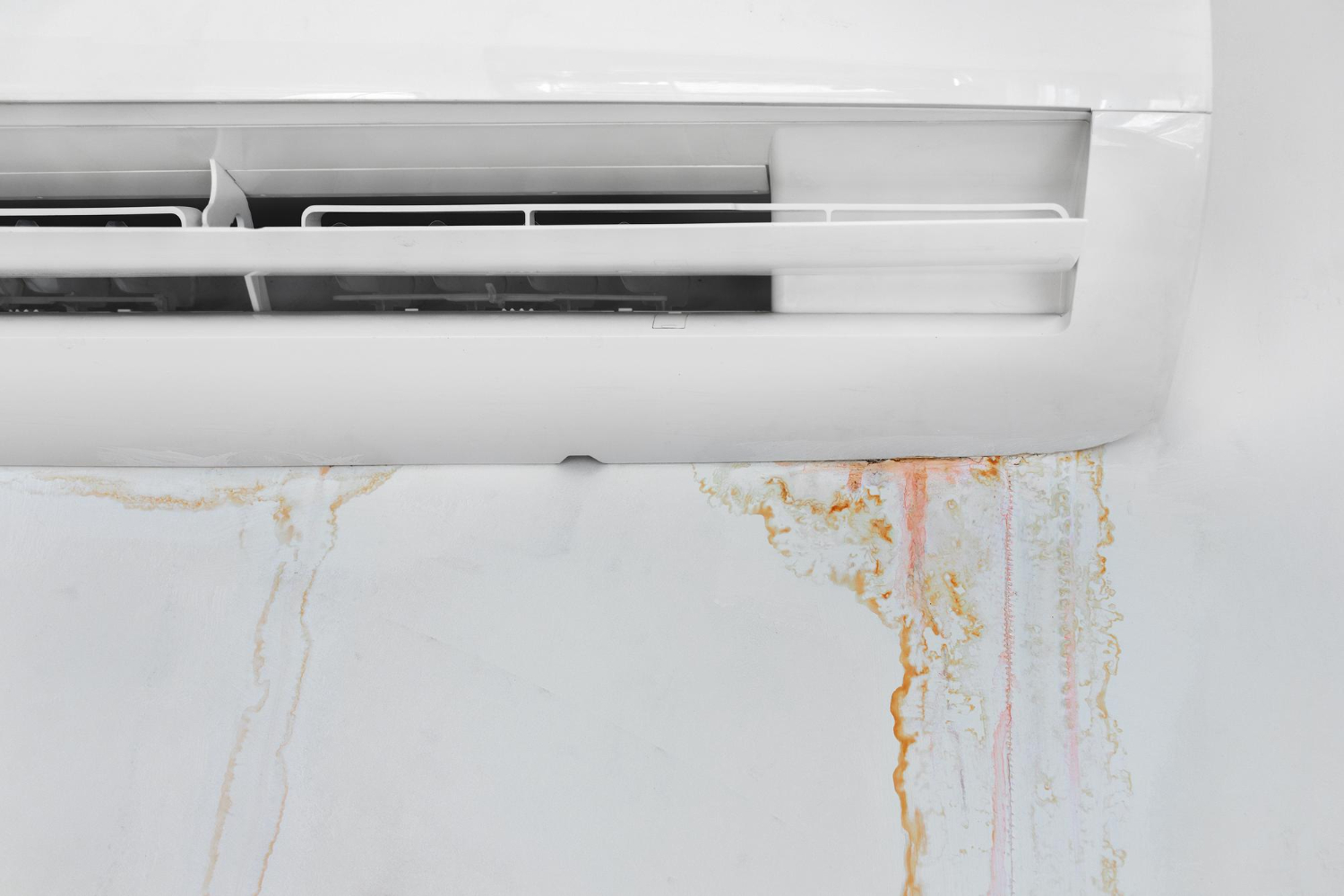Water leaking from a ductless AC system can lead to serious problems for any homeowner. In many cases, the moisture doesn’t just go away on its own. It seeps into walls, ceilings, or flooring, damaging materials and leading to unpleasant smells or even mold. In a city like Los Angeles, where ductless mini splits are popular options for home cooling during long hot summers, spotting problems like this early is key to avoiding bigger repairs down the line.
The issue often starts small — maybe a few drops near the indoor unit, a faint smell, or slight discoloration on a wall. But if it gets ignored, the damage can spread quickly. Los Angeles homes often rely on year-round AC systems, so leaks can pop up anytime if systems aren’t cared for properly. The good news is that if caught early, water damage caused by a leaking ductless AC can often be fixed without needing major work.
Identifying Signs Of Water Damage
Catching signs of water damage early can save you from major headaches and higher repair costs. When your ductless AC starts leaking, the symptoms may not always be obvious. But with a bit of awareness, you can spot the warning signs before they become a major issue.
Start by checking areas near and around the indoor unit. Look for these signs:
– Water stains on walls or ceilings
– Soft or buckled drywall
– Peeling paint or bubbled wallpaper
– A musty or damp smell in the room
– Mold or mildew near the unit or vents
– Pooled water or discoloration under the unit
Any of these signs could mean a leak is present. Homeowners in Los Angeles may notice these problems more often in rooms with less air circulation, such as guest bedrooms or rooms that are closed off during the day. If these signs come with reduced cooling or strange noises from the AC unit, the issue is likely tied to the system.
In one case, a homeowner noticed bubbling paint on the wall surrounding the indoor air handler. It turned out the unit’s drainage line had become clogged, causing condensation to overflow into the wall cavity. Early detection allowed them to fix the issue before mold developed too widely.
Immediate Steps To Take When You Discover A Leak
Once you notice a leak, it’s important to act quickly to stop the water from causing further damage. Don’t wait to see if it gets better on its own. These systems are designed to pull in moisture and cool air, so any blockage or broken component can create a constant drip.
Here’s what you should do right away:
- Turn off your ductless AC unit to stop more water from entering your home.
- Use towels or a wet vac to soak up any standing water around the unit.
- Check your AC’s drainage system. In ductless systems, clogs often form in the condensate line or pump.
- Avoid opening up any panels beyond the air filter unless you’re trained to do so.
- Document the damage in case you need reference later when discussing repairs.
Most leaks happen because of blockages in the condensate drain line or because the system is not draining properly. When water has nowhere to go, it backs up into the unit and eventually leaks out into the home. Even a small drip can cause damage if left long enough.
After you control the immediate situation, call our technicians to inspect the unit. They’ll be able to pinpoint whether it’s a blocked drain, a faulty fan, or a broken pump that’s behind the leak. Acting quickly gives you the best chance of keeping repairs limited to the AC unit itself and not your floors or drywall.
How Water Damage Affects Your Ductless AC System
Water leaking from a ductless AC doesn’t just create puddles on the floor. It can slowly compromise the entire system. Moisture trapped inside the unit may affect its internal circuits, reduce cooling power, or eventually stop the system altogether. The longer it runs with hidden water damage, the more likely it is to need costly repairs or replacement.
Beyond the AC unit itself, excess moisture often leads to mold and mildew growth inside nearby walls or ceilings. In some cases, the leak may exist for weeks before it’s discovered, especially if it’s behind installed trim or furniture. The damp areas provide a perfect place for mold to thrive, which can affect both air quality and health.
It’s also common for homeowners to overlook how leaking water gradually affects internal structures. Wood framing, insulation, and drywall can all absorb water. This weakens materials over time and increases the risk of permanent water stains, swelling, or rot. One overlooked leak could mean eventually tearing out part of a ceiling or reconstructing a wall.
The efficiency of the system also drops when water interferes with components inside the indoor unit. Reduced airflow, sensor malfunctions, or even short circuits can occur. Problems like these leave the AC working longer than it should, raising your energy bills and causing more wear.
Preventing Future Leaks And Water Damage
Once you’ve addressed a leak, keeping it from happening again should be the priority. Leaks often return when a system isn’t cleaned or inspected regularly. Rather than waiting for the next issue, set up a plan to catch small signs early.
Here are practical ways to prevent ductless AC water damage:
– Schedule seasonal servicing before peak cooling months
– Make sure the unit’s drainage system, including the condensate line, is clean and free of debris
– Keep the air filter clean to reduce strain and condensation buildup
– Ensure the indoor unit is installed level, not tilted
– Watch for signs of water each time you clean or adjust the unit
– Have our professionals inspect the pump and electrical components each year
Many of these issues aren’t visible unless you know what to look for. That’s why having regular tune-ups by our technicians is key—they’ll clean, check, and test each part of the system so it works like it should across the hot months in Los Angeles.
Maintaining Comfort And Efficiency In Your Los Angeles Home
Protecting your comfort means more than just fixing leaks—it’s about keeping your home’s AC working properly all season long. When a ductless system runs with even a small flaw, whether a slow leak or low airflow, it has to work harder to cool your home. That extra load shortens its lifespan and makes your indoor environment less comfortable.
Scheduling routine care doesn’t just help avoid leaks. It often brings to light other wear and tear that could interrupt your cooling. A system that drains properly, moves air freely, and stays clear of internal damp areas will operate better and last longer. You’ll also have peace of mind knowing your air is cleaner and that the surfaces inside your home stay dry.
Timely air conditioning installation in Los Angeles helps to avoid these problems altogether, especially in homes where the current equipment is no longer reliable. Getting the right size and drainage setup from the start makes a big difference in how well the system performs under daily use. Whether you’re managing water damage from an older system or upgrading to a more efficient unit, taking action early keeps your home protected and running efficiently.
If water damage and system inefficiency disrupt your comfort, investing in air conditioning installation in Los Angeles can help secure a reliable cooling solution for your home. Precise Air Systems, Inc. understands the importance of keeping your indoor environment consistent and safe, and our professionals work to ensure that every installation minimizes the risk of future problems. For a quick estimate or to schedule a service visit, please contact us today.



